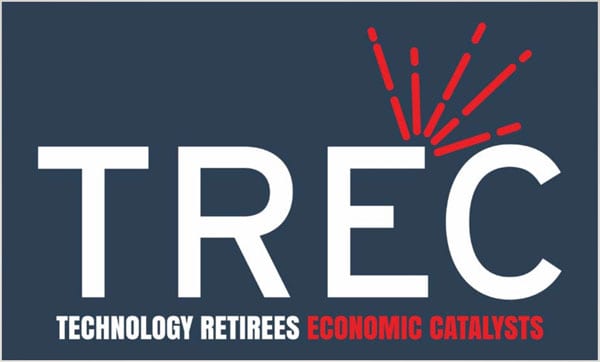
February 18, 2019; Albuquerque Journal
What might a mechanical engineer or a physicist have to offer a local nonprofit? Apparently, quite a lot. In Albuquerque, retirees of Sandia National Laboratories, a large national security engineering firm, are putting their tech and engineering skills to work for local area businesses and nonprofits.
Technology Retirees Economic Catalysts (TREC) was formed by former Sandia engineer Ron Moya, who saw an opportunity to get retiring lab engineers engaged in economic development. TREC is a program of the Women’s Economic Self Sufficiency Team, a nonprofit that offers support and incubation services to individuals looking to start a business in New Mexico.
“We’re a matchmaker. When a business needs help, we reach out to the Sandia retiree community and find someone,” said Hal Morgan, a member of the TREC steering committee. TREC is hoping to expand beyond Sandia retirees and include other local technical institutions, such as Air Force Research Laboratory, Los Alamos National Laboratory, and the University of New Mexico.
Volunteerism and service have always been a critical, if under-recognized, component of economic vitality and—for years—has been a go-to resource for the nonprofit sector to support underfunded areas, such as operations, facilities development and myriad other functions that fall into the much discussed nonprofit overhead. Those volunteerism efforts have fallen into two main categories: Hands-on volunteer efforts, where lay people supplement organizational staff in manual labor—ladling soup, building houses, painting fences—and skilled volunteerism, where largely white-collar workers support nonprofits in strategic planning, technology build-outs, and other projects that align not just the hours, but the skills that people have to give.
Sign up for our free newsletters
Subscribe to NPQ's newsletters to have our top stories delivered directly to your inbox.
By signing up, you agree to our privacy policy and terms of use, and to receive messages from NPQ and our partners.
TREC, and models like Operation Nehemiah, which connects construction workers to small-scale facilities projects at nonprofits and churches, are signals of an emerging hybrid model—or more appropriately stated, an expansion of skilled volunteerism—to more manual, trade functions that nonprofits need in addition to the basic business support they’re now receiving.
Shira Greenberg, founder of Keshet Dance and Center for the Arts in Albuquerque, one of TREC’s service recipients, described the impact that one of Sandia’s retired scientists has had as they worked together to create a performance that blends art and science.
Who would have thought that we could work with a scientist of his stature on our dance project? It’s a unique and rare opportunity and just as amazing as you might imagine. [Our volunteer] blows our minds every time we meet with him. This dream of ours will be fantastic because of him.
Key to these models are the intermediary nonprofits that navigate the resource and need balance that can be so tricky in volunteerism. We’ve all heard examples of volunteerism gone wrong when a big company calls up a local nonprofit to tell them how lucky they are to be receiving hordes of eager employees to paint a fence that doesn’t need painting. Or, consider a team of management consultants who promise to help a nonprofit “transform” its operations with their well-honed business skills, knowing little about the nonprofit or its programs. National intermediaries have emerged over the past decades in both hands-on (HandsOn network) and skilled volunteering (Common Impact, Executive Service Corps) as the need for sector translation, project scoping, and the balancing of power dynamics—what Morgan described as “matchmaking”—rises. TREC and Operation Nehemiah seem to be exploring that same model at a hyper-local level and making a new set of skills available to the social sector.
It should be said that these intermediary models are likely best used alongside an organization’s own volunteer engagement models.—Danielle Holly












